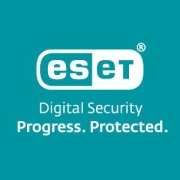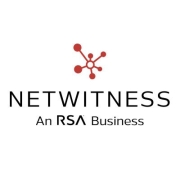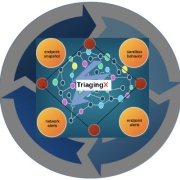Extended Detection and Response (XDR) is an advanced security solution offering more comprehensive threat detection and response by integrating multiple security tools into a unified platform.
XDR addresses the complexities of today’s security landscape by providing greater visibility across networks, endpoints, and cloud environments. Utilizing machine learning and automation, it enables security teams to detect, investigate, and respond to threats faster and more efficiently
What are some key features of XDR?
What benefits can organizations expect from XDR?
In industries such as finance, healthcare, and manufacturing, XDR is implemented to provide enhanced security over sensitive data and critical systems. Its ability to integrate with existing infrastructure makes it adaptable across various environments, ensuring robust threat protection.
XDR is useful for organizations seeking comprehensive security solutions. It enhances threat detection and response capabilities while simplifying security operations. By integrating multiple tools, XDR offers a more streamlined approach to managing and mitigating security threats.









































































Attackers target many layers of the IT environment, including the corporate network, email servers, and cloud systems. Security teams must build a security toolset that enables effective detection and response to security threats
Extended detection and response helps resolve both security and operational challenges. It is a security solution that:
XDR is not an antivirus.
XDR is a centrally managed security solution that protects networks and all their endpoints from various threats. An antivirus is a standalone security solution that protects the individual system or device it is installed upon from various malware activities.
XDR, on the other hand, is a complete solution with multiple capabilities, including intrusion detection, data encryption, and firewalls, etc. An antivirus works like a subset of XDR that detects and removes malicious files.
Endpoint detection and response (EDR) products monitor events generated by endpoint agents to look for suspicious activity. These solutions also collect data on suspicious activity and improve it with other contextual information from correlated events. However, EDR solutions do not offer integrations with other tools and data sources for full visibility.
XDR provides a wider view, integrating data from endpoint, cloud, identity, and other solutions, allowing for full visibility into an organization’s network and IT environments.
Security information and event management (SIEM) is a key element of the modern security operations center (SOC). SIEM pulls log data from dozens or hundreds of security tools to generate meaningful alerts and provides one interface for security analysis.
This is similar to XDR. However, SIEM only provides a summarized view of security data. This results in a very low level of detail.
SIEM cannot access or process additional information from other security tools to further investigate a specific incident.
In addition, SIEMs don’t have built-in response capabilities. SIEM is a detection tool that can identify security incidents but cannot stop or eradicate threats.
XDR has the following features that SIEM lacks:
Managed detection and response (MDR) is an outsourced service that offers dedicated personnel and technology to help companies improve the efficiency of security operations, threat identification, threat investigation, and threat response.
Endpoint detection and response (EDR) refers to a group of tools used to find and investigate threats to endpoint devices. EDR tools typically provide detection, analysis, investigation, and response capabilities.
Managed detection and response (MDR) solves challenges faced by security teams by strengthening a company's internal security team with external resources and personnel. An MDR service provider will offer an external Security operations center (SOC) that carries out the necessary actions to monitor and protect an organization’s IT assets. An MDR provider will likely use XDR solutions, but they will be controlled by external SOC analysts rather than an in-house team.
XDR solves security challenges by simplifying them and enabling in-house security teams to efficiently do their jobs. XDR unifies visibility across an organization’s security architecture and automates recurring and time-consuming tasks.
Endpoint detection and response tools integrate network, endpoint, cloud, and third-party data to prevent security attacks. XDR tools unify threat prevention, detection, investigation, and response all in one platform. XDR tools detect threats using behavioral analytics to help reveal the root cause of the threats.
Extended Detection and Response (XDR) is a comprehensive cybersecurity solution that combines multiple security tools and technologies to provide enhanced threat detection, response, and remediation capabilities. It offers a centralized platform for monitoring and managing security incidents across various endpoints, networks, and cloud environments. Here is an overview of how XDR software works:
-XDR collects and aggregates data from various sources, including endpoints, network devices, servers, cloud platforms, and security tools.
-It captures and analyzes data from logs, events, network traffic, and endpoint activities to gain comprehensive visibility into the entire IT environment.
-XDR software employs advanced analytics and machine learning algorithms to detect and identify potential security threats.
-It analyzes collected data in real-time, looking for patterns, anomalies, and indicators of compromise (IOCs) to identify malicious activities.
-XDR uses a combination of signature-based detection, behavioral analysis, and threat intelligence to identify known and unknown threats.
-XDR correlates and contextualizes security events and alerts by analyzing data from multiple sources.
-It combines information from different security tools and technologies to provide a holistic view of the attack chain and the overall security posture.
-XDR identifies relationships between different security events and provides insights into the root cause and impact of an incident.
-XDR enables automated response actions to mitigate security incidents promptly.-It can automatically block malicious IP addresses, isolate compromised endpoints, or quarantine suspicious files.
-XDR also provides playbooks and workflows for incident response, guiding security teams through the remediation process.
-XDR facilitates proactive threat hunting by allowing security analysts to search for indicators of compromise and perform in-depth investigations.
-It provides advanced search capabilities and visualizations to identify hidden threats and understand the scope of an attack.
-XDR also integrates with threat intelligence feeds and external sources to enrich investigation data.
-XDR generates comprehensive reports and dashboards to provide visibility into security incidents, trends, and compliance status.
-It helps organizations meet regulatory requirements and demonstrate adherence to security policies.
-XDR enables security teams to track and measure key performance indicators (KPIs) to improve their overall security posture.
XDR enhances threat detection by integrating data from multiple security silos, which allows for comprehensive analysis and correlation of information. This holistic approach provides a deeper understanding of threat activity across networks, endpoints, and workloads, enabling more accurate and faster detection of incidents. Unlike traditional methods that may overlook subtle signs of threats in isolated systems, XDR connects the dots to present a unified picture, making it easier to identify and respond to sophisticated attacks.
Can XDR solutions be customized for specific business needs?Yes, many XDR solutions offer customization options to align with your specific business needs and security priorities. You can tailor detection rules, response actions, and workflows to suit your organizational structure and risk profile. This flexibility ensures that the XDR system can effectively integrate with your existing security tools and processes, enhancing its ability to detect and respond to threats in a way that supports your unique operational requirements.
What is the role of automation in XDR solutions?Automation is a key component of XDR solutions, driving efficiency in threat detection and response. By automating repetitive and time-consuming tasks such as alert triage, threat analysis, and incident response, XDR enables your security team to focus on more strategic activities. Automated workflows can ensure faster response times and reduce the likelihood of human errors, leading to stronger overall security posture. Additionally, automation helps in scaling security operations without a proportional increase in resources.
How does XDR enhance incident response capabilities?XDR enhances incident response by providing a unified platform that consolidates alerts, context, and investigation data. This integration reduces the time required to understand the scope and impact of a threat. XDR also facilitates coordinated response activities by automating certain mitigation steps and providing actionable intelligence that helps security teams execute response strategies more effectively. The consolidated view and faster access to necessary information allow for quick containment and remediation of threats.
Are XDR solutions suitable for small to medium-sized businesses?XDR solutions can be a good fit for small to medium-sized businesses (SMBs) due to their integrated approach, which simplifies security management. Many XDR offerings are scalable and can be tailored to meet the resource constraints and security needs of SMBs. By bundling multiple security functions into one solution, XDR can reduce the complexity and cost associated with managing separate security products. This can provide robust protection without the need for extensive in-house security expertise.